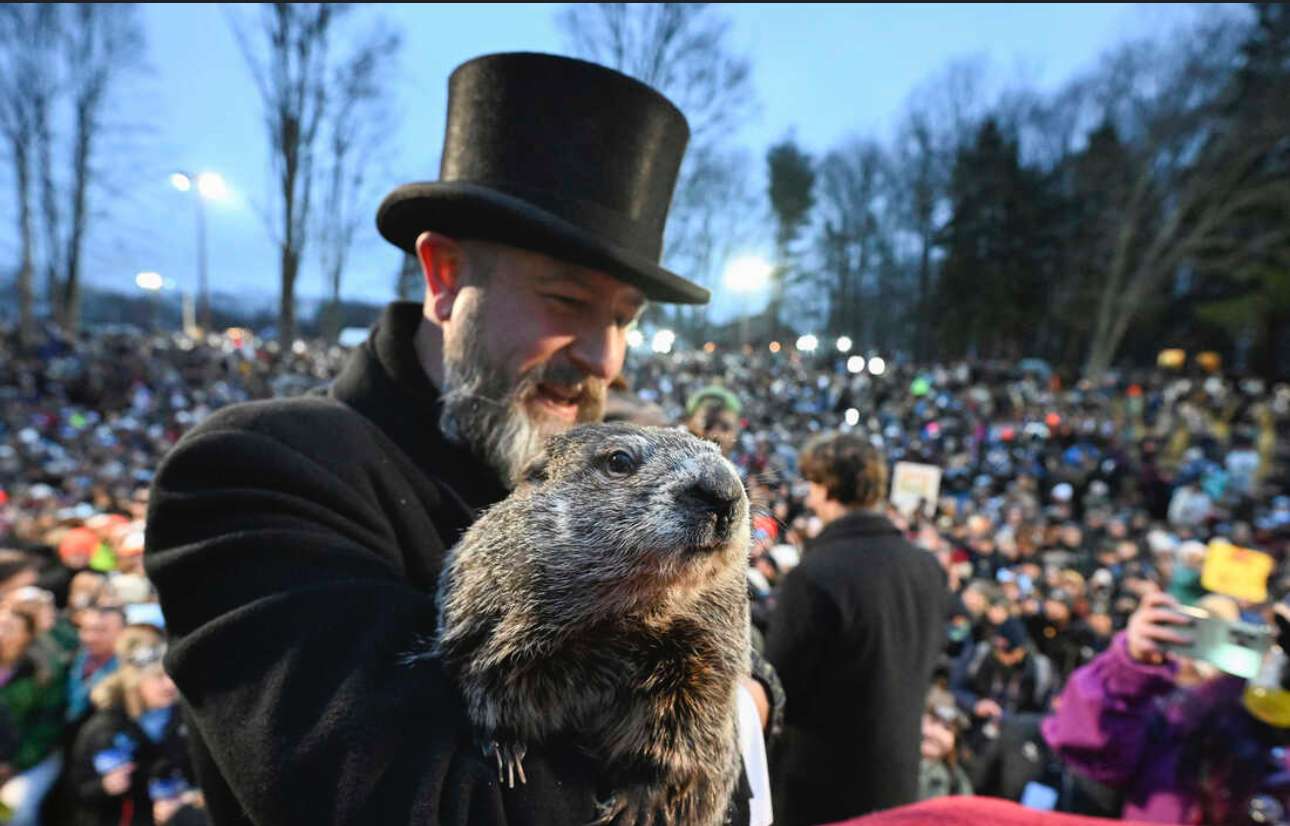It appears Punxsutawney Phil, the resident Weather Prognosticator of Gobbler’s Knob, came out of his burrow today and DID NOT see his shadow. According to legend, this means spring is right around the corner.
If you’re out of the loop, or just curious why we look to a Woodchuck in Pennsylvania with hopeful hearts each year on February 2, we’ve done a shallow dive into the history of what we now celebrate as Groundhog Day. Read more in depth about the traditions and origins, and check out the great photos of the actual celebration in Punxsutawney, PA here at Groundhog.org.
So, where do we get Groundhog Day? Likely from one of many pre-Christian holidays, Imbolc, which was celebrated in pagan and Celtic tradition around this time of year to celebrate the beginning of the thaw. Over time and with the spread of Christianity, this intertwined with the Christian holiday of Candlemas.

Candlemas Day was celebrated on February 2nd, when Christians would take their candles to the church to have them blessed, hoping this would bring good fortune for the remaining winter.
An old English folk song shows us how this tradition began to have something to do with predicting the weather, or “weather prognostication”:
If Candlemas be fair and bright,
Come, Winter, have another flight;
If Candlemas brings clouds and rain,
Go Winter, and come not again.
It wasn’t until this idea was introduced to Germany that an animal became part the lore. There, it became common belief that if the hedgehog saw his shadow on Candlemas Day there would be a “Second Winter” (or 6 more weeks of bad weather).
As German settlers came to what is now the United States, they brought their traditions and folklore. With the absence of hedgehogs in the United States, a similar hibernating animal was chosen. The Groundhog.
So what do we know about Groundhogs? Well, for starters: The groundhog is a rodent of the family Sciuridae, belonging to the group of large ground squirrels called Marmots.
Also known as woodchucks, they are some of the most common mammals in the U.S. They have the nickname “whistlepig” because when alarmed, they use a high pitched whistle to warn the colony.
They weigh as much as 11lbs. They have two layers of fur: a dense grey undercoat and a longer coat of banded guard hairs that gives them a “frosted” appearance.
Groundhogs spend the winter hibernating in their burrows, significantly reducing their metabolic rate and body temperature. By February, they can lose as much as half their weight.
We here at Darkhorse are going to click below to learn more (and maybe take a lesson on how to lose weight while hibernating) from these lovely Marmots. Happy Groundhog Day!
So, how much wood would a woodchuck chuck if a woodchuck could chuck wood?
The groundhog, also known as a woodchuck, chucks quite a bit of dirt when digging out intricate systems of underground burrows.
Check out these cool groundhog facts: https://t.co/v6btEsH39R pic.twitter.com/C354V1LIhn
— US Department of the Interior (@Interior) February 2, 2022















